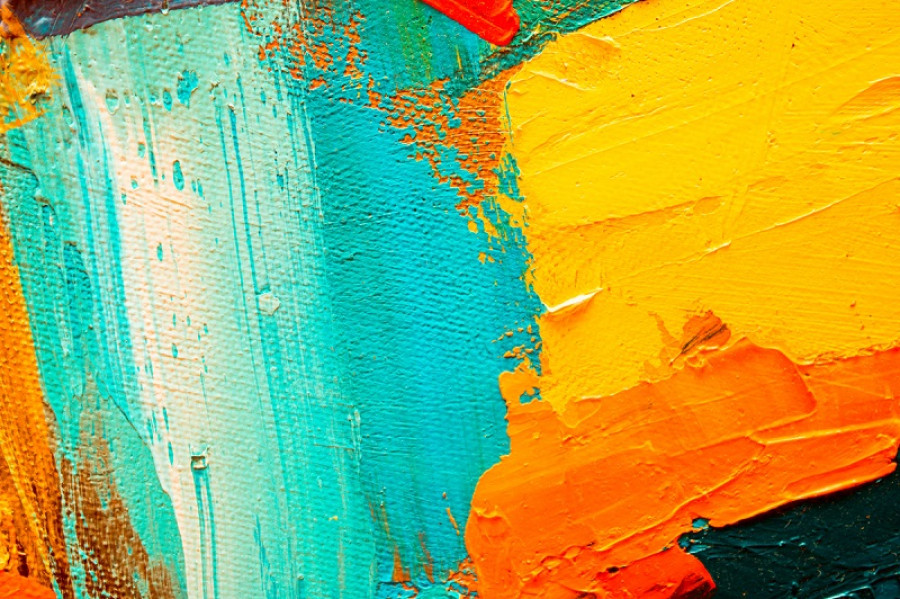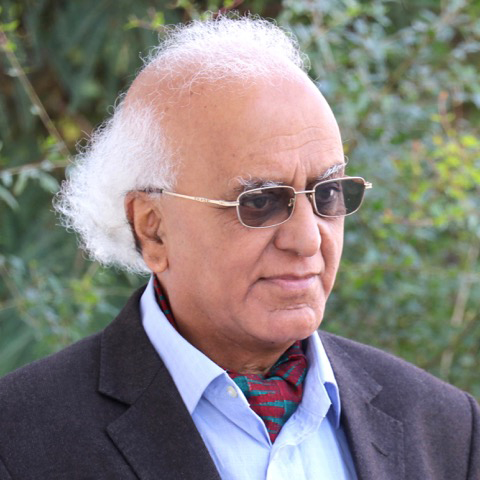Columns
Ambivalence in modern Nepali art
Nepali artists found the modernist technique a useful way of shifting their focus from a society with traditional values to the self.
Abhi Subedi
Two separate letters that I received from two different persons made me browse through the art reviews and articles about Nepali paintings that I have written over several decades. The theme of both letters was more or less similar—they referred to modernism in Nepali art. One was written by a well-known painter, editor and writer of books about Western art in Nepal and a teacher at Sirjana College of Fine Arts, Navindra Man Rajbhandari, and the other was written by John Tain whom I have not met in person. John Tain says he is working with his colleagues on a theme of 'modernism and modern art histories across South Asia, including Nepal'. He mentions my three qualifications, my 'familiarity with modern culture', my 'work as an art critic', and my 'familiarity with the artists of the last few decades'. This came as a trigger as well as a challenge for me. Here I do not want to dwell on Navindra's 'motif' as I am already writing an article for his journal on the theme of modernism in Nepali arts in general that includes Nepali poetry, and Nepali paintings in particular. My conversation with John Tain via Zoom coincides with the writing of this column.
I am in no position to say anything about 'my qualifications', naturally. But I don't want to hide my desire to share my experience about those areas through this column. As a literary writer, critic and art reviewer, I worked in the milieu of a culture that experienced a unique dialectic with the earlier traditional, semi-feudalistic and neo-classical culture that remained, and still does, quite dominant in Nepal.
The modern culture in Nepal grew as a result of a need to reinvent itself, and was very meaningfully realised by artists in this country. The dialectics involved politics and ambivalence in approach. A search for something beyond the familiar and traditional was the compelling factor, and, in my experience, the modernist impulse with experimentalism was the mantra. The two important genres that were the most well-known candidates for those changes were poetry and paintings.
I worked with the concept of modernism that came through exposures to Western literature and arts. Education played a very important role in that. Here, I want to focus more on paintings than on poetry even though the poets and the artists shared similar experiences in terms of modernist style, not least the experiments in their works.
For the introduction of modern art in Nepal, education played a very significant role. As it's a big theme, I only want to allude briefly here. I've written on this theme previously, the latest one being an article entitled 'The education of the Nepali artists in India and France: their impact on modern Nepali art'. It is published in French in a book entitled Rencontre avec l'Inde or 'Encounter with India' published by ICCR Delhi in 2017. In that, I have traced the history of modernism for which the education of Nepali artists from universities of India and Europe was a catalyst. Though the Kathmandu Valley has always remained a home of the Chitrakars, modernism introduced new styles. Out of the many artists whose names cannot be mentioned in limited space, only a few names and their training are introduced here.
The trainings of two painters—Chandra Man Singh Maskey (1900-1984) and Tej Bahadur Chitrakar (1898-1971)—in Calcutta in the second decade of the 20th century, to my mind, is the first-ever exposure of Nepali artists to the Western techniques, modes and methods of art education. The portraits executed by these two painters clearly show how they shifted the focus of portraiture from the traditional delineation to the expressive modes of paintings. Without writing other details I only want to mention the training of another painter and his impact on modern Nepali paintings here.
The training of the doyen of modernist paintings in Nepal, Lain Bangdel (1919-2002), happened in Paris. The exhibition of his abstract paintings at Saraswati Sadan of Tri-Chandra College, Kathmandu in 1962 surprised and shook the visitors for the first time. They had not seen anything like that previously. King Mahendra, who had just dissolved the elected government and Parliament and introduced his autocratic rule, inaugurated this exhibition. That this king had invited Bangdel to Nepal and given him important positions and responsibilities at the Royal Nepal Academy shows the ambivalent approach and politics of modernism in Nepali arts. Poets made the most tantalising modernist experiments in their choice of themes and the use of idioms during Mahendra's rule. Their poetry was reminiscent of the modernist experiment of the English poet TS Eliot, whom they read in the English department. Significantly, education played a role in the use of modernism in Nepali poetry as in paintings. As a student and long-time teacher of English and Western literature that includes French (in English translation) and American literature, I found paintings as a very useful medium to understand that culture.
My association with the modern painters and dozens of my reviews of their exhibitions and articles about the meeting points of poetry and paintings has convinced me that modernism in Nepali arts and culture (I would not call that alternate modernism) has come to meet certain needs. One was that modernism gave the creators an intrinsic possibility of expressing what was not allowed at that time. Abstract forms in paintings, the unique use of figurality and idioms of expression in paintings, and similar complex use of metaphors, liberal use of folk and ritual themes in poetry, gave the artists and poets mediums that allowed them to compose unique structures, and feel absolutely free to express their thoughts and feelings. Secondly, they found the modernist technique a useful way of shifting their focus from the society with traditional values to the self of the artist. This estrangement of the characters in their works is clearly one important feature of modernism. They saw that in the major works of European and modern Indian art that goes back to the early encounter with the Western expressive techniques. Politically, modernism in Nepal has also been labelled as an escapist way of doing the creation. The debate continues.
I have seen that shift in different generations of painters and poets in modern times, and the tensions that this process has created. Modernism in Nepali paintings, poetry and culture is deeply rooted in a desire to experiment, and express consciousness of breaking shackles and creating forms by using modernist methods. Ambivalence has played a significant part in that modernist quest.
***
What do you think?
Dear reader, we’d like to hear from you. We regularly publish letters to the editor on contemporary issues or direct responses to something the Post has recently published. Please send your letters to [email protected] with "Letter to the Editor" in the subject line. Please include your name, location, and a contact address so one of our editors can reach out to you.




 5.55°C Kathmandu
5.55°C Kathmandu















